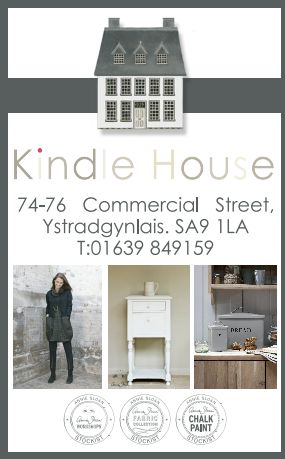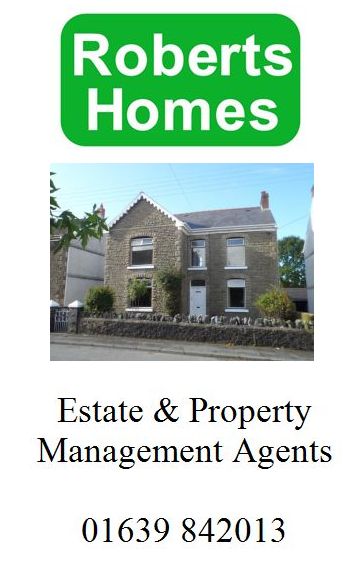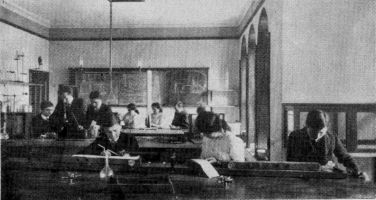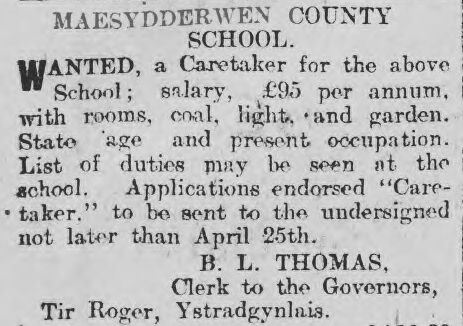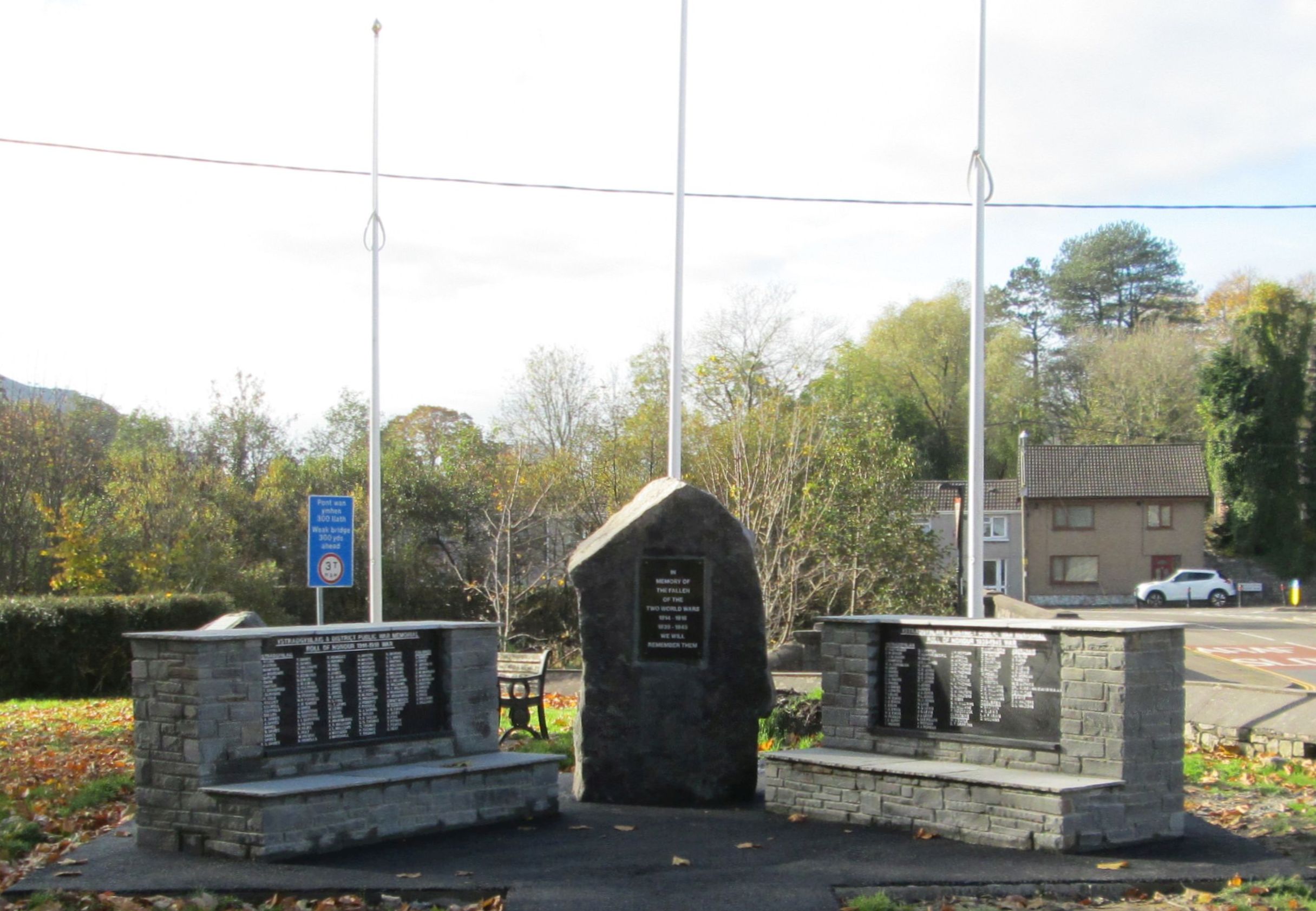Ystradgynlais & District
History and Heritage
History of Maesydderwen School
Ystradgynlais County School was founded in 1907, opening its doors for the first time on 15th October 1907 with forty-four pupils on the roll. Mr J. Walter Jones was Headmaster and by the end of 1907 there were fifty-seven boys at the school, after 'the misunderstanding concerning the award of fellowships had been cleared'. (*)
The initial site of the school was in the buildings of the Old College School, but this was clearly intended as a very short-term measure and active steps were soon taken to purchase land for a new site upon which to base the school. In April 1909 the Ystradgynlais Governors obtained a 999 year lease on land in the Brynderwen Area, generally referred to as the Brecon Road site. Plans for a new building were begun and an estimate of £4425 in contemporary money was obtained.

Ystradgynlais County School 1909
- Thanks to Mr Jeff Alexander, whose aunt Maggie Alexander of Abercraf, is the in the 3rd row 3rd from the right. Born in 1892,she went on to teach for many years at Abercraf school.
Substantial local landowner, Colonel Fleming Gough, was at this time the Chairman of the school governors of both the Ystalyfera and Ystradgynlais boards, and had already given land for the construction of Ystalyfera Intermediate School. He now offered the Ystradgynlais Governors the magnificent old Mansion of Maesydderwen, which could be converted for use as a school.
Maesydderwen Mansion had been built by the then manager of the Ynyscedwyn Ironworks, Patrick Moir Crane, in the late 1848s. However, the Ironworks had long been in debt and part-owned by the London bank Price Marryat and Co, and just as Crane moved in, Marryat had arrived from London and occupied the mansion himself for the next two decades.
The exact status of the occupants of Maesydderwen Mansion in this period appears confusing, as the last of them, a Doctor Newton, had leased it out, but when Colonel Gough offered Maesydderwen to the school Doctor Newton 'was given notice to surrender his interests' implying that those who occupied the house did not own it, but rather that Colonel Gough retained the overall ownership.
In October 1909 the Site Committee of the school approved the purchase of the freehold interests of Maesydderwen, and Colonel Fleming Gough also agreed to an exchange of lands within this area for others that would be more suitable for use with the school. By April 1910 the conveyancing had been completed, and Maesydderwen was occupied in 1911.
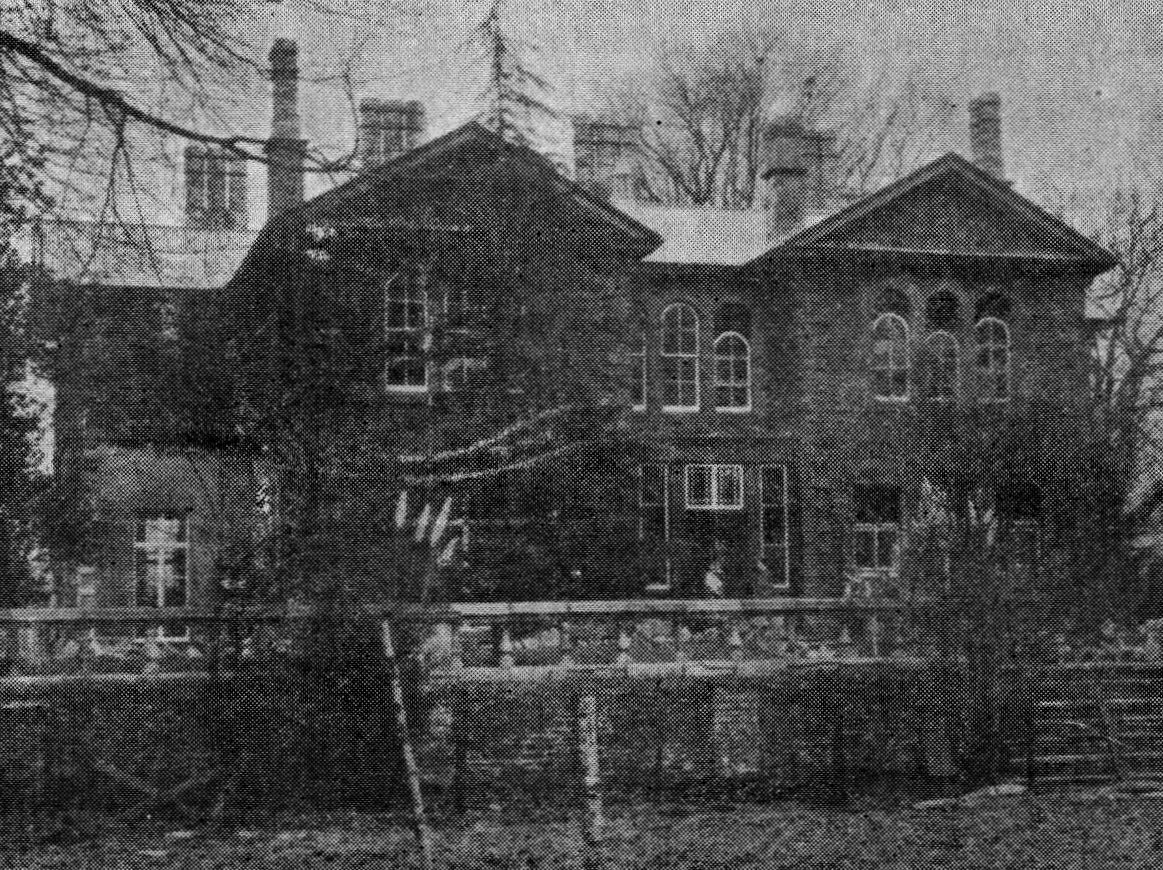
Maesydderwen Mansion was remembered in its school days as having 'beautifully polished floors and spacious classrooms' and an 'intimate atmosphere which pervaded the whole school'.
The official opening of the school's new Maesydderwen premises occurred in late November 1911. The Labour Voice newspaper of 25th November 1911 recounts it in detail:-
OPENING OF THE NEW COUNTY SCHOOL
POWERFUL ADDRESS BY MR OWEN OWEN
THE NEED OF THOROUGHNESS
Mrs Gough, of Yniscedwyn House, formally opened Maesydderwen House on Saturday afternoon as the Ystradgynlais Intermediate County School. Previously a private residence, with spacious grounds, the situation of the building makes it an ideal centre for the purpose to which it has been dedicated. The Breconshire Education authorities and the governors, headmasters, teachers and pupils of the school have secured an asset in Maesydderwen which should have an ever growing influence on the welfare of the people in the district.
The building is large enough to accommodate at least 150 scholars in addition to which there is science and art rooms and a large hall, together with a kitchen in which it is proposed to teach the girl pupils cookery. There is a large playing field and splendid spaces for lawns and gardens which, however, requires money and time to make them beautiful.
There was a large and representative gathering present when Mr Cooke Rees, the architect, presented Mrs Gough with a silver key. After opening the door Mrs Gough invited those present to enter the hall. The hall will accommodate about 200 and was filled, in addition to which nearly the whole of the teachers and pupils were present.
On behalf of the pupils, Miss Jennie Harris presented Mrs Gough with a beautiful bouquet of chrysanthemums, lilies of the valley and ferns.
Col. F.R.D.A. Gough presided and was supported by Mrs Gough, Mr Moore Gwyn, Captain Woodliffe, Councillors Idris Davies, W E Jones, the Rev D J Davies, Archdeacon Bevan (Brecon) and Mr Owen Owens, chief inspector of the Central Welsh Board.
Mr J Walter Jones B.A., headmaster, read letters of apology from Sir Edward Anwyl, Mr Howell Walters, Rev Glanley, Mr F H W Harris, Mr G N Miers, Mr R C Devereaux, Mr Herbert Lloyd, Miss Morgan (late Mayor of Brecon), Mr Owen Edwards, Mr G H Strick, Miss Winifred Harris, Mr T Rees and others.
The Chairman said he was glad to see so many present. He hoped that the school would prove a blessing to the district and that the education derived by the pupils would leave a mark upon the district that would never be obliterated. Intermediate education was in its infancy yet, and it was very much handicapped. At present, he thought it was a waste to spend national money on intermediate education because the pupils could only obtain a mere smattering of that which was taught in the time their parents could allow them to attend.
Alderman Morgan Abercrave, and County Councillor Idris Davies, moved and seconded a vote of thanks to Mrs Gough.
In replying, Mrs Gough said: I do not see why amongst a collection of friends and neighbours I should not say 'thank you' myself (Laughter). It is a very great pleasure to see you all and see so many collected together. It is a very god augury for the school. If the teaching at the school was carried on with the brightness and beauty of the key she held in her hand they would very soon be surrounded by a body of very clever men and women. What grieved her was that people should place brains before souls. She knew people could be as happy as sand boys without brains but she thought it a great pity that secular education should come before religious education. She did not see why souls should not come before brains and she hoped that before very long that would be amended. She wished the school a very bright and prosperous future.
Mr J Walter Jones B.A., after having read the letters of apology, said it would be a shame to him as headmaster if he did not feel some inspiration to do good work in such surroundings. He said the question of money for educational purposes was an ever present question, although the governors could not be surpassed in their readiness to expend any money upon what was needed from an educational standpoint. With regard to the furnishings of the school they were still without many things. The walls were practically without pictures and he would like private generosity to step in and furnish the walls. Mr Moore Gwyn had already given something and the Chairman had promised something. They wanted many other things which were next to actual necessities. The school had experienced crises in matters of money but he thought things were getting better and that they would end the financial year in prosperity. They began with 57 pupils but that number had been increased to 86, of which 54 were boys and 32 girls. He thought the proportion should be more even. He paid a compliment to the parents for their loyal co-operation with himself and the teachers.
Mr Owen Owen, chief Inspector of the Welsh Central Board, said he was in the position of those who were generally in the midst of things and not in the position of seeing quite as much as those who looked on. It had been a principle in the administration of the Intermediate Education Act to bring education close to the power of the people. With such pleasing surroundings he had no hesitation in expressing his opinion about the future success of that school. He would like to say a few words about the danger of a lack of thoroughness and concerning the danger of pupils obtaining a smattering of so many subjects. The length of time during which pupils now remained in school had improved very considerably during recent years and the danger from that source was fast disappearing. Perhaps the danger from the overcrowding of a timetable was not yet out of the way.
In 1917, the Headmaster, Mr Walter Jones, was appointed to Neath County School, and Maesydderwen gained a new Headmaster, Mr W. Ernest Rees, who had already been teaching at the school for a decade.
On 29th February 1932 a disastrous fire broke out in one part of the school and soon spread to engulf the entire building. After the fire, some moving around allowed the secondary pupils to be taught temporarily in Gurnos Council School, while the displaced pupils were taught in the Drill Hall, Gurnos.
A new school was built on the site of the destroyed school and was opened in September 1934. In 1937, Mr Ernest Rees retired as Headmaster due to ill health, and was replaced by Mr Seth Owen, formerly Head of English. Mr Owen was to serve as Headmaster through to 1951, and also as Head of the Hen Fes Memorial Fund, which would come up with the idea, and money, for a memorial pipe organ and Book of Remembrance after the Second World War.
In September 1951 Mr D H Griffiths became Headmaster of Maesydderwen School, and in January 1952 a ceremony took place where the Hen Fes Memorial Fund presented the school with the memorial pipe organ, and Book of Remembrance. In April 1952 Mr Griffiths retired, and was replaced as Headmaster by Mr Alwyn Thomas.
By April 1954 new extensions to the school had been completed at a cost of £180,000 and with the start of the Summer term additional pupils were taken on. Gurnos Secondary Modern Boys School and Ynyscedwyn Secondary Modern Girls School now merged their pupil rolls into Maesydderwen, and from September 1954 all children who had attained the age of 11 within the Ystradgynlais district would now be admitted to Maesydderwen, which was organised as a Comprehensive School.
* NOTE
Much of the information on this page comes from the 1957 publication 'Secondary Education in the Ystradgynlais School District 1907-1957' by Alwyn Thomas, Headmaster. Alwyn Thomas retired as Headmaster in 1973.
All copyright remains with the original copyright holder, and all original research is copyright Val Trevallion, YEARGroup and is put online as a free community project.
You can contact the Ystradgynlais and Ystalyfera History and Heritage websites by emailing:
webdesign@wolfianpress.com
or Val Trevallion by emailing yeargroup@hotmail.co.uk.
Ystradgynlais - South Wales
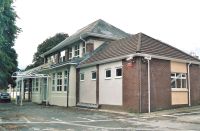
Laboratory at old Maesydderwen
Email Yeargroup:
yeargroup@hotmail.co.uk
Email Wolfian Design:
webdesign@wolfianpress.com
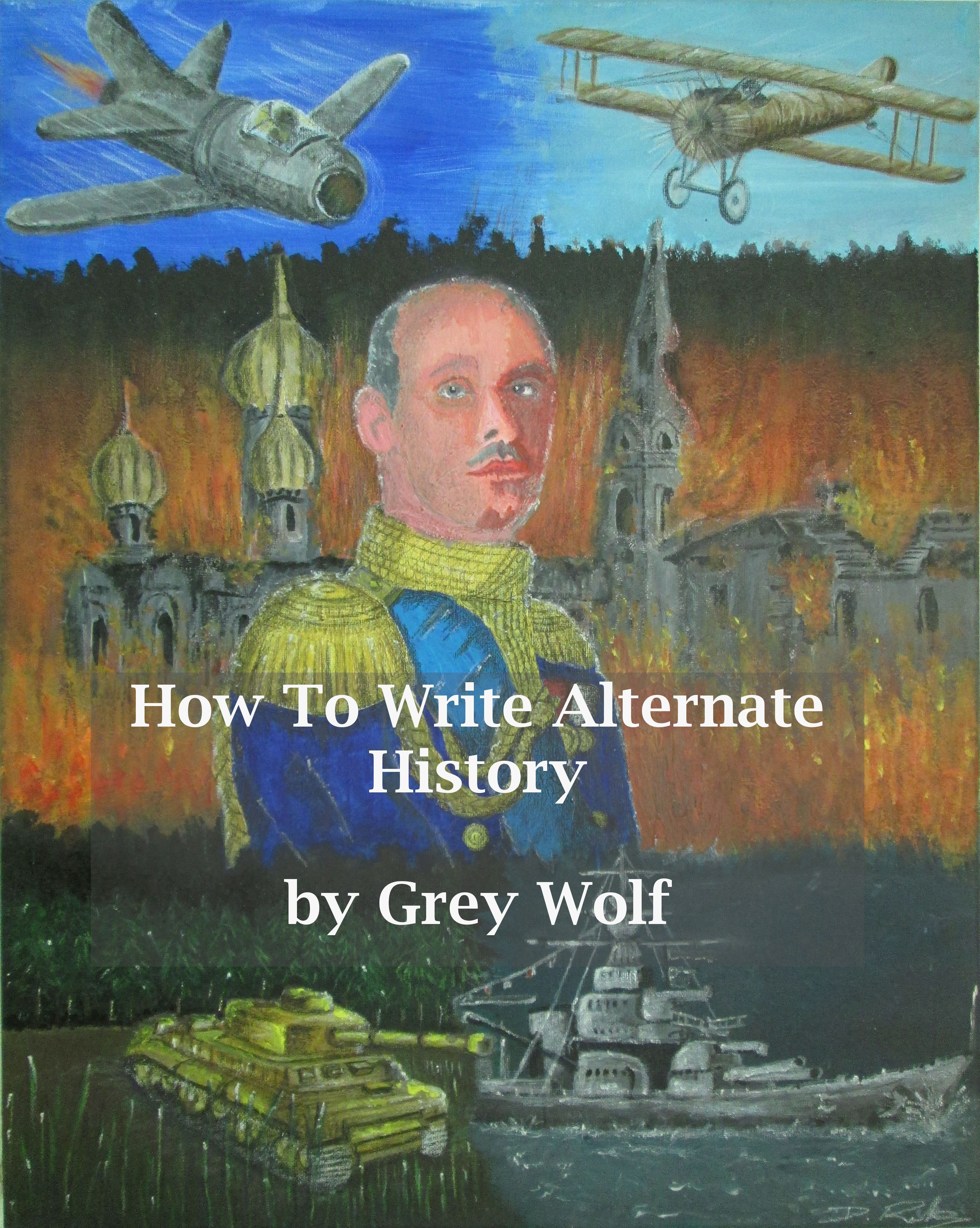
Click the cover to purchase the paperback
How To Write Alternate History is a series of articles by Grey Wolf, examining subjects such as the identity of man, whether man makes the weather, how the everyday in an alternate world is going to be changed and what names for music, vehicles, weapons etc would be different.







